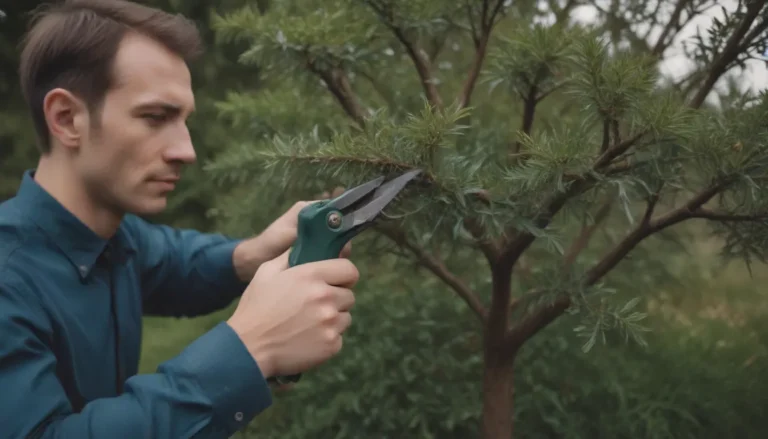The Ultimate Guide to Growing and Caring for Trumpet Vine

If you’re a fan of vibrant orange flowers and want to attract pollinators to your garden, then trumpet vine, also known as trumpet creeper, might be the perfect plant for you. This fast-growing vine is relatively low-maintenance and can add a pop of color to your outdoor space. However, it’s essential to understand how to properly care for and manage trumpet vine to prevent it from becoming invasive. In this comprehensive guide, we’ll cover everything you need to know about growing and caring for trumpet vine.
Trumpet Vine: An Introduction
Before we dive into the details of caring for trumpet vine, let’s take a closer look at this stunning plant. Native to the hot, humid Southeastern United States, trumpet vine produces clusters of trumpet-shaped orange flowers that bloom from June to September. These flowers are not only beautiful but also attract hummingbirds, bees, and butterflies to your garden.
Key Characteristics of Trumpet Vine:
- Scientific Name: Campsis radicans
- Common Names: Trumpet Vine, Trumpet Creeper
- Preferred Climate: Mild climates; hardy in zones 4 to 9
- Sunlight Requirements: Full sun to partial shade
- Soil Preferences: Wide range of soil types; prefers moist, well-drained soil
- Maintenance Level: Low; prune annually to control growth
Now that you have a basic understanding of what trumpet vine is, let’s move on to the essential care tips for ensuring its health and vitality.
Trumpet Vine Care Tips
Light:
- Trumpet vines thrive in full sun, so make sure to plant them in an area that receives at least six hours of direct sunlight each day.
- Partial shade is also acceptable, but full sun will promote the best flowering.
Soil:
- Trumpet vines can adapt to various soil types, including sandy, loamy, and clay soils.
- They prefer moist but well-drained soil conditions, similar to their native habitats in seasonal swamps and forest thickets.
Water:
- Trumpet vines require moderate soil moisture but have good drought tolerance.
- Water only when you see signs of wilting and withering; in most climates, natural rainfall should be sufficient.
- Aim to provide about 1 inch of water per week through a combination of rainfall and/or irrigation.
Temperature and Humidity:
- While trumpet vine thrives in hot, humid climates, it is hardy in zones 4 to 9.
- In less humid regions, the vine tends to be less aggressive and easier to manage.
Fertilizer:
- Avoid excessive fertilization, as trumpet vines are aggressive spreaders and can thrive in lean soil.
- No supplemental fertilization is necessary for these plants to thrive.
By following these care tips, you can ensure that your trumpet vine remains healthy and vibrant throughout the growing season.
Types of Trumpet Vine Cultivars
If you’re interested in adding variety to your garden, consider planting one of the following named cultivars of trumpet vine:
- C. radicans ‘Apricot’
- C. radicans ‘Flava’
- C. radicans ‘Indian Summer’
- C. radicans ‘Crimson Trumpet’
- C. radicans ‘Judy’
- C. radicans ‘Atropurpurea’
Each cultivar offers unique characteristics and can add a different look to your outdoor space.
Pruning Tips for Trumpet Vine
Pruning is essential to control the growth of trumpet vine and encourage blooming. Here are some pruning tips to keep in mind:
- Prune in Early Spring: Trim the plant back to nearly ground level before new growth starts in the spring, leaving a few buds.
- Optional Late Autumn Pruning: You can also cut back the vine in late autumn after the leaves have dried and fallen.
- Regular Maintenance: Consider cutting back vines throughout the season to keep the plant in check.
If you plan to grow trumpet vine on a structure like a garage or outbuilding, consider installing wires for the vine to attach to. This will make pruning and maintenance easier throughout the growing season.
Propagating and Potting Trumpet Vine
Propagating trumpet vine is relatively easy, with one of the simplest methods being to transplant runners. If you prefer to grow trumpet vine in containers to control its spread, here are some potting and repotting tips to keep in mind:
- Container Size: Use a large, heavy container such as a half-barrel or 20-plus gallon planter to accommodate the vine’s growth.
- Potting Mix: Fill the container with general-purpose potting mix and provide a sturdy climbing trellis for support.
- Root Containment: To prevent the vine from spreading its roots, consider using a bottomless bucket container when planting.
- Annual Pruning: Be prepared to prune back the vine to soil level annually to maintain its size and shape.
These tips will help you successfully propagate and grow trumpet vine in containers, adding a touch of beauty to your patio or balcony.
Encouraging Blooms and Addressing Common Issues
Once you’ve mastered the basics of caring for trumpet vine, it’s essential to know how to encourage blooming and address any common problems that may arise:
Encouraging Blooms:
- Full Sun: Provide ample sunlight to ensure robust blooming throughout the summer.
- Avoid Late Pruning: Prune the plant early in the spring to avoid removing new growth where flower buds form.
- Minimize Feeding: Trumpet vines don’t require excessive feeding to bloom and respond better to neglect than over-fertilization.
Common Problems:
- Uncontrollable Spread: Plant trumpet vine at least 6 to 12 feet away from buildings or trees to prevent aggressive growth.
- Fire Hazard: Avoid planting trumpet vine near foundations in wildfire-prone regions, as the plant is highly flammable if left unpruned.
By following these tips, you can enjoy the beauty of trumpet vine in your garden while addressing potential issues that may arise.
Conclusion
In conclusion, growing and caring for trumpet vine can be a rewarding experience if done correctly. By providing ample sunlight, well-drained soil, and occasional pruning, you can enjoy the vibrant orange blooms and attract pollinators to your outdoor space. Whether you choose to plant trumpet vine in the ground or in containers, following these care tips will help you maintain a healthy and beautiful vine throughout the growing season.
So go ahead, plant some trumpet vine in your garden and watch as it adds a touch of color and excitement to your outdoor oasis. Remember, with a little care and attention, your trumpet vine will flourish and bring joy to both you and the pollinators that visit your garden.





